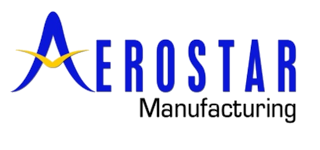Curious about the future of the forgings and castings market?
According to Globe Newswire:
Forging and Casting Components market report is expert study that can deliver you with an elaborate analysis of the Forging and Casting Components. The report covers information about top players, projected size of the market, data and figures to update about where opportunities are in the market, competitor analysis and vendor information. Also, it offers a complete analysis of the key market dynamics, with growth drivers, challenges, restraints, opportunities and trends. Furthermore, receive exact details and statistics associated to Forging and Casting Components market and its key factors such as revenue, growth, compound annual growth, year-over-year developments, consumption, and production.
Forging is a manufacturing process involving the shaping of metal using localized compressive forces. The blows are delivered with a hammer (often a power hammer) or a die. Forging is often classified according to the temperature at which it is performed: cold forging (a type of cold working), warm forging, or hot forging (a type of hot working). For the latter two, the metal is heated, usually in a forge. Forged parts can range in weight from less than a kilogram to hundreds of metric tons. Forging has been done by smiths for millennia; the traditional products were kitchenware, hardware, hand tools, edged weapons, cymbals, and jewellery. Since the Industrial Revolution, forged parts are widely used in mechanisms and machines wherever a component requires high strength; such forgings usually require further processing (such as machining) to achieve a finished part. Today, forging is a major worldwide industry.
Casting is a foundry process by which a metal part is produced from a ceramic (investment) mold that has been formed by a disposable (wax or plastic) pattern.They are products using the lost wax process which is a process for producing near-net-shape metal parts. Investment casting process is an industrial process in which high technology waxes are used to form patterns that allow the production of components with accuracy, repeatability, versatility, and integrity in a variety of metals and high-performance alloys.
Today, forging and casting are major worldwide industry.
Competitive Landscape:
Report offers the Forging and Casting Components market competition landscape and a corresponding comprehensive study of the prominent players in this market, include
- Precision Castparts Corp
- Arconic
- Nippon Steel & Sumitomo Metal
- KOBELCO
- Thyssenkrupp
- Aichi Steel
- Eramet Group
- American Axle & Manufacturing Holdings
- Bharat Forge Limited
- Avic Heavy Machinery
- VSMPO-AVISMA
- Allegheny Technologies
- WanXiang
- FAW
- VDM Metals
- Mahindra Forgings Europe
- JSW
- CITIC Heavy Industries
- Scot Forge
- Farinia Group
- Longcheng Forging
- KITZ Corporation
- Tongyu Heavy Industry
- Sinotruck
- Dongfeng Forging
- Jiangsu Pacific Precision Forging
- China National Erzhong Group
- China First Heavy Industries
- Sypris Solutions
- Ashok Leyland Limited (Hinduja Group)
Market Segmentation:
Forging and Casting Components market report delivers study of the key trends in each sub-segment of the worldwide Forging and Casting Components report, with estimates for development at the global, regional and country level and categorized the market based on product type, applications, regions.
Segment by Type
- Forging
- Casting
Segment by Application
- Automotive
- Aerospace
- Agricultural
- General Industrial
- Others
Regional Analysis:
- North America (United States, Canada and Mexico)
- Europe (Germany, UK, France, Italy, Russia and Turkey etc.)
- Asia-Pacific (China, Japan, Korea, India, Australia, Indonesia, Thailand, Philippines, Malaysia and Vietnam)
- South America (Brazil etc.)
- Middle East and Africa (Egypt and GCC Countries)
Years considered for this report:
- Historical Years: 2016-2021
- Base Year: 2021
- Estimated Year: 2022
- Forecast Period: 2022-2027
Detailed TOC of Global Forging and Casting Components Market Outlook 2022
1 Forging and Casting Components Market Overview
1.1 Product Overview and Scope of Forging and Casting Components
1.2 Forging and Casting Components Segment by Type
1.3 Forging and Casting Components Segment by Application
1.4 Global Market Growth Prospects
1.5 Global Market Size by Region
2 Market Competition by Manufacturers
2.1 Global Forging and Casting Components Production Market Share by Manufacturers (2016-2021)
2.2 Global Forging and Casting Components Revenue Market Share by Manufacturers (2016-2021)
2.3 Forging and Casting Components Market Share by Company Type (Tier 1, Tier 2 and Tier 3)
2.4 Global Forging and Casting Components Average Price by Manufacturers (2016-2021)
2.5 Manufacturers Forging and Casting Components Production Sites, Area Served, Product Types
2.6 Forging and Casting Components Market Competitive Situation and Trends
3 Production and Capacity by Region
3.1 Global Production of Forging and Casting Components Market Share by Region (2016-2021)
3.2 Global Forging and Casting Components Revenue Market Share by Region (2016-2021)
3.3 Global Forging and Casting Components Production, Revenue, Price and Gross Margin (2016-2021)
3.4 North America Forging and Casting Components Production
3.5 Europe Forging and Casting Components Production
3.6 China Forging and Casting Components Production
3.7 Japan Forging and Casting Components Production
4 Global Forging and Casting Components Consumption by Region
4.1 Global Forging and Casting Components Consumption by Region
4.2 North America
4.3 Europe
4.4 Asia Pacific
4.5 Latin America
5 Production, Revenue, Price Trend by Type
5.1 Global Forging and Casting Components Production Market Share by Type (2016-2021)
5.2 Global Forging and Casting Components Revenue Market Share by Type (2016-2021)
5.3 Global Forging and Casting Components Price by Type (2016-2021)
6 Consumption Analysis by Application
6.1 Global Forging and Casting Components Consumption Market Share by Application (2016-2021)
6.2 Global Forging and Casting Components Consumption Growth Rate by Application (2016-2021)
Continued…
